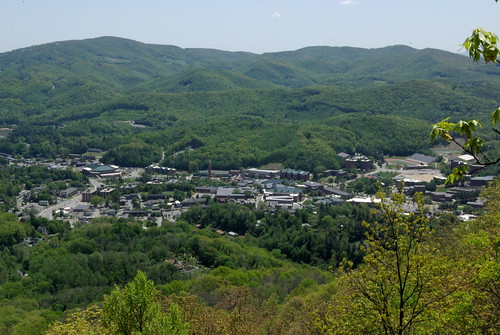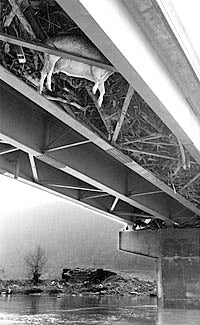FREE U.S. SHIPPING ON $65+ ORDERS.
FREE U.S. SHIPPING ON $65+ ORDERS.
Menu title
This section doesn’t currently include any content. Add content to this section using the sidebar.
Your headline
Image caption appears here
$49.00
Add your deal, information or promotional text
All eyes are on Appalachia lately. Last week, we saw the premiere of COAL on Spike TV. Tonight, U.S. Senator and Scots-Irish historian Jim Webb brings us Born Fighting: How the Scots-Irish Shaped America on the Smithsonian Channel.
As you may know, Webb wrote a popular book with the same name. It was a spirited defense of the Scots-Irish, who are his people and ours. They were the dominate ethnic group in the Appalachian South. Their fierce pride, clan structure, and distrust of outsiders became our own, but before they defined our region, they were restless immigrants who, for several centuries, seemed as destined to migrate as they were to breathe.
Their story starts in the Scottish lowlands, where they battled the English over sovereignty and one another over food, horses, property, and clan grievances. Their world was full of strife--recurring wars, poverty and soil so thin that it could hardly be farmed. They responded with blunt persistence, fighting whatever came at them and, at times, marauding to survive.
When Ulster Plantation, a new colony in the north of Ireland, was opened they went in droves. It held the promise of land; Ulster was a sparsely populated region. It was also familiar terrain; in smaller numbers, Scots had been migrating there for centuries.
 For a while, Ulster worked. Because the region had few native Irish, it was easy for differences like religion to be overlooked. The settling Scots expanded their numbers, extending their strength, but in what was probably inevitable, massive conflicts arose between the English, the Scottish, and the Irish. Ulster's residents were put dead center in a three kingdom war.
For a while, Ulster worked. Because the region had few native Irish, it was easy for differences like religion to be overlooked. The settling Scots expanded their numbers, extending their strength, but in what was probably inevitable, massive conflicts arose between the English, the Scottish, and the Irish. Ulster's residents were put dead center in a three kingdom war.
By the 1700s, many Scots-Irish had their fill. As much as one-third of Ireland's Protestant population resumed their Westward migration, this time across the Atlantic to the edge of the American colonies, the undeveloped backcountry of the Appalachian range.
Even here, they found conflict. This time, it was with the aristocracy that controlled America's lowlands. They admitted the Scots-Irish so long as the fiery newcomers stayed in the mountains. The Anglican elite found them rowdy and unruly but potentially useful at expanding the colonies' Western reach. They sent them into the ancient forests of Appalachia, where the Scots-Irish would have to do what they did best--fight.
Webb describes the Scots-Irish response:
"Their answer, then as now, was to tell the English Establishment to go straight to hell. A deal was a deal--they would fight the Indians, although many of them would also trade with them and even intermarry...America was a far larger place than Ireland, a land in which they could live as they wished and move as freely as they dared whether or not the established government liked what they were doing...so they made their own world in the mountains."
We know that world well. While there are nearly three hundred years between those first mountain settlers and us, we still see their influence. It appears in our language, our customs, but most conspicuously in our interactions with the world around us. I would say that we remain a clannish people, fiercely loyal to family, unimpressed with material wealth, quick tempered, suspect of the elite, strong fighters and religiously fervent.
These traits run deep in my family. Maybe they do in yours. How many passionate genealogists do you have? How many wildcat personalities? How many religious fundamentalists? How many members of the military? How many are suspicious of doctors, lawyers, the government--anyone who carries an official capacity? How many say a-goin, young'un,or might could,as in "he might could run the young'ins to the store; he's a-goin 'thar, anyways"?

 Appalachian State University[/caption]
Appalachian State University[/caption] Scott was inducted into the International Motorsports Hall of Fame in 1999[/caption]
Scott was inducted into the International Motorsports Hall of Fame in 1999[/caption] Young drivers benefit from Scott's trailblazing[/caption]
Young drivers benefit from Scott's trailblazing[/caption] Gaelic Storm frontman, Patrick Murphy[/caption]
Gaelic Storm frontman, Patrick Murphy[/caption]Yesterday,investigators shared their theorieson last April's Big Branch Mine explosion with the people who have been most affected--the victims' families. According to investigators, there probably was not a single cause. They believe that a series of controllable errors and uncontrollable circumstances led to the explosion.
The experts were careful in their phrasing around Massey Energy's culpability. They said that the mine was "noncompliant" in multiple areas, but beyond that, deferred to criminal investigations that are currently underway.
While they presented expert testimony, the Mine Safety and Health Administration also stressed that yesterday's finding are preliminary. The agency's final report is due in 60 to 90 days.
NPR has posted excellent illustrations of the Federal agencies theories.
| Last edited by marklynn on February 15, 2011 at 6:35 am |
| Title: |
characters. Most search engines use a maximum of 60 chars for the title. |
|---|---|
| Description: | |
***
 The Dearing home place, 2008[/caption]
The Dearing home place, 2008[/caption] Dearing Gravestone, Defaced[/caption]
Dearing Gravestone, Defaced[/caption]I'm a sucker for deserted places--old buildings, sometimes entire towns that were once bustling but have been left and forgotten. Hand me my camera and drop me by an empty factory or a house with trees growing through its roof; I'll be content for hours.
Part of the thrill for me is imagining these structures at their prime. I picture them on the day they were finished, when they are new and clean. I try to remember that someone was proud of each and every one of them, even the must utilitarian shed.
I try to figure out the original configuration of rooms and the ways they were used. A summer kitchen, for example, is the setting for a thousand meals, but it surely hosted as many conversations, some gossipy stories, maybe arguments or an unexpected kiss. At the very least, it must have heard someone unleash a string of curses, long ago, at badly burnt food.
I also see potential. As long as their foundations are strong, each building could be put to good use. They could be homes, shops, restaurants, mechanics' garages, offices, or banks. Any function that a new, prefab building could serve, I can't help but think that an old one could do better.
This series will explore some of Appalachia's most interesting deserted places. Some have been restored; others are in the last stages of decay. Some are deep in the woods; you could drive right up to others.
We'll start with lost buildings in coal country. Photographer Jim Lo Scalzo took his camera into hollers and up hillsides to uncover the remains of shuttered coal operations. In his introduction, he explains "in some cases the remains are barely noticeable: a concrete foundation, a larry car, a coal tipple. In other cases entire towns lay abandoned and overgrown."
Below is a video of what he found. During this series, it would also be great to hear about your discoveries. Maybe it's an old family house that has fallen into disrepair or a place you played as a kid. Where are your favorite abandoned buildings and forgotten structures?
Share your stories and post your photos as we explore deserted Appalachia.
Ghosts in the Hollow from Jim Lo Scalzo on Vimeo.
 A cow carcass entangled beneath the Cheat River Bridge. Photograph by John Warner, courtesy of the West Virginia State Archives.[/caption]
A cow carcass entangled beneath the Cheat River Bridge. Photograph by John Warner, courtesy of the West Virginia State Archives.[/caption] A favorite field in Stanardsville, Virginia[/caption]
A favorite field in Stanardsville, Virginia[/caption] A mind clearing spot on the Shenandoah River[/caption]
A mind clearing spot on the Shenandoah River[/caption]...and get 10% off your first order!
We use cookies on our website to give you the best shopping experience. By using this site, you agree to its use of cookies.
Plus first dibs on sales, the latest stories, & heaps a'luvin from us.
